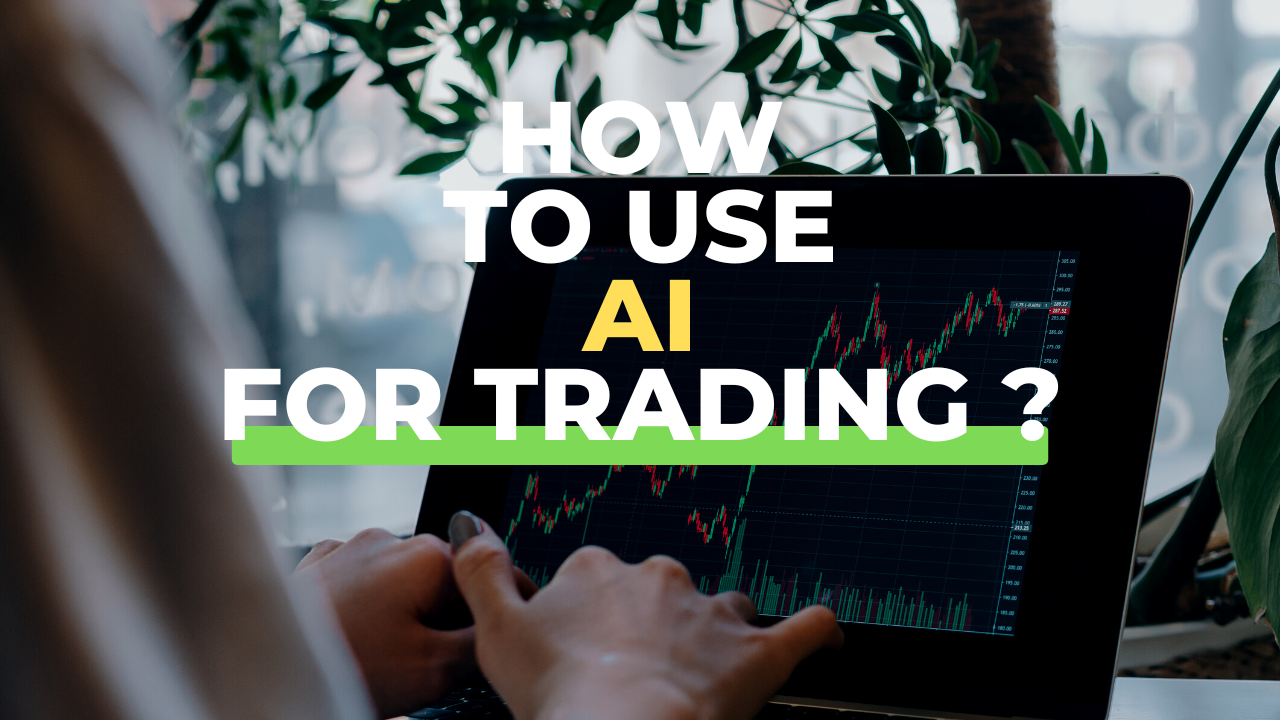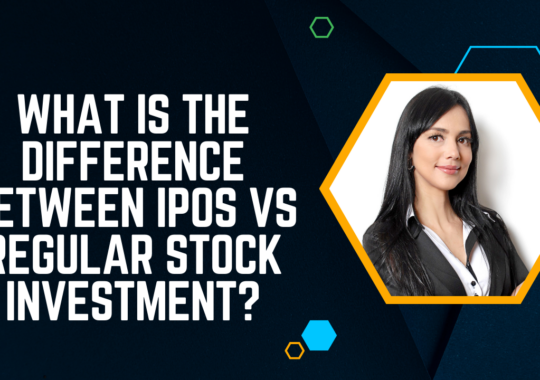The world of trading has experienced a significant shift in recent times, mainly because of the advent of artificial intelligence (AI). By harnessing the power of AI-driven trading systems, traders can now analyze enormous volumes of data, identify patterns and trends that would be challenging to detect for humans, and execute trades with greater accuracy and speed. Irrespective of whether you’re an experienced trader or a novice, knowing how to leverage AI for trading can offer a significant edge in today’s fast-paced financial markets.
Tap here to know What is Currency Trading and how to get started in 2023?
At its core, AI for trading is all about leveraging machine learning algorithms and other advanced analytics tools to analyze massive amounts of market data and identify profitable trading opportunities. This might involve everything from analyzing news articles and social media trends to monitoring the performance of individual stocks or other financial instruments in real-time. By identifying patterns and trends that might be invisible to human traders, AI can help you make more informed decisions about when to buy or sell, and potentially increase your overall returns.
Employing AI for trading has numerous benefits, but it also brings certain challenges. The machine learning algorithms can be complex and arduous to interpret, and the results may not always be as anticipated. Additionally, the copious amount of data involved in AI-based trading can be overwhelming, making it difficult to sift through and identify significant trends and signals. However, despite these hurdles, an increasing number of traders are embracing AI-powered systems to gain an advantage in the cut-throat financial markets of today.

In this guide, we’ll delve into the various methods of leveraging AI for trading, ranging from building and training your own machine learning models to utilising pre-existing tools and platforms tailored for trading. We’ll also scrutinise the advantages and limitations of using AI for trading, along with some practical advice and best practices to initiate your journey.
Whether you’re a seasoned professional or a newcomer venturing into the trading realm, this article will equip you with a strong groundwork to employ AI and boost your trading proficiency, ultimately amplifying your returns.
Understanding AI and Machine Learning in Trading
To start incorporating AI into your trading strategy, it’s essential to have a fundamental grasp of what AI and machine learning entail and how they apply to trading. AI involves the development of intelligent machines that can execute tasks that typically demand human intelligence, such as problem-solving, decision-making, and learning. Machine learning is a subdivision of AI that involves training algorithms to recognize patterns and generate predictions based on data. In the context of trading, machine learning can analyze vast amounts of financial data to identify patterns and trends that can help traders make more informed decisions on when to buy or sell assets.
Developing Your Own Machine Learning Models
Using your own machine learning models is a popular way to apply AI to trading, and you can do this using programming languages like Python or R. This method requires expertise in both trading and programming and can be challenging, but it can also be very advantageous if executed correctly. The first step is to collect and clean financial data, and then you must choose appropriate algorithms and train your models to identify patterns and trends that interest you. After developing your models, you can make trading decisions based on the signals they produce.
Using Pre-Built Tools and Platforms
Using pre-built tools and platforms designed specifically for trading is another way to leverage AI in your trading. There are a plethora of such tools and platforms available in the market today, from basic trading bots to advanced AI-powered systems that can analyze news articles, social media trends, and other sources of market data. Some of the most widely used tools and platforms are Alpaca, QuantConnect, and TradingView. Unlike developing your own models from scratch, using these pre-built tools and platforms often requires less technical expertise, which makes them a good option for novice traders looking to incorporate AI in their trading strategies.
Using AI to Identify Trading Signals
No matter which tools and platforms you use, the crucial factor in using AI for trading is to recognize the correct signals and patterns to act upon. This can be accomplished using various methods, including analyzing news articles and social media trends, tracking technical indicators and market trends, among others. Some prevalent signals to observe are fluctuations in trading volume, abrupt price changes, and significant news events that could influence the value of a particular financial instrument. By leveraging AI to detect these signals, traders can make more knowledgeable decisions about when to execute trades.
Best Practices for Using AI for Trading
To maximize the benefits of AI-powered trading, it’s essential to follow certain best practices. The first step is to have a clear understanding of your goals and trading strategy. This will enable you to direct your AI efforts towards the signals and patterns that are most applicable to your needs. Additionally, it’s necessary to be open to experimenting and fine-tuning your approach over time by utilizing techniques like backtesting and optimization to improve your models and trading strategies. Lastly, it’s vital to stay current with the latest advancements in AI and machine learning, as these technologies are continuously developing.
Also read:
Tips for Choosing Stocks in Intraday Trading
Indices Trading Strategies You Must Know
Fibonacci Retracement: A Guide
FAQs
What is AI in trading, and how does it work?
AI in trading refers to the use of machine learning algorithms to analyze huge volumes of data and identify patterns in market behavior. By identifying these patterns, AI can assist traders in making more informed decisions and potentially generating higher returns.
How can I get started with using AI for trading?
When beginning to use AI for trading, it is important to select a platform or software that suits your requirements and budget. Conducting research and considering factors such as the level of customization, ease of use, and quality of customer support can be beneficial.
What are the benefits of using AI for trading?
Using AI for trading can offer several benefits, such as the ability to analyze vast amounts of data quickly, identify patterns that humans might miss, and make more informed decisions based on data-driven insights. This can potentially lead to higher returns and more profitable trades.
Are there any risks involved in using AI for trading?
Trading with AI can have advantages, but it is not without risks. One significant risk is the potential for data bias, where algorithms can be distorted by incomplete or inaccurate data. In addition, AI is unable to predict unforeseen or black swan events that can impact the market. To minimize risks, it is important to integrate AI with human expertise and experience instead of relying solely on automated algorithms.
What types of trading strategies are best suited for AI?
A variety of trading strategies, such as momentum trading, trend following, and statistical arbitrage, can be implemented using AI. The ideal approach will vary based on your objectives, risk tolerance, and the particular AI software you are employing.
Can I use AI to trade cryptocurrencies?
Yes, AI can be used for trading cryptocurrencies, as well as traditional financial instruments like stocks and bonds. However, due to the highly volatile nature of the cryptocurrency market, it’s important to exercise caution and make informed decisions based on data-driven insights.
Is it necessary to have a technical background to use AI for trading?
You don’t necessarily need a technical background to utilize AI for trading. Many AI trading platforms provide user-friendly interfaces that can be used by traders with various levels of technical expertise. Nevertheless, it’s crucial to have a fundamental comprehension of how the algorithms operate and how to interpret their results.
Conclusion
In recent years, the use of AI in trading has become more common, and its benefits are evident. By analyzing large amounts of data and detecting patterns that may be overlooked by humans, AI can aid traders in making informed decisions and achieving potentially higher returns. Nonetheless, it’s critical to remember that AI is not a panacea, and trading still has risks. Additionally, AI should be used in conjunction with human expertise and experience, rather than solely relying on automated algorithms.
To begin utilizing AI in trading, selecting a platform or software that suits your requirements and budget is essential. Adequate research and considerations of factors like customization, ease of use, and customer support are crucial when making a decision. It’s also important to understand the limitations of AI and to continually educate yourself while adjusting your strategies as the technology progresses.
It’s essential to remember that successful traders are those who are disciplined, patient, and adaptable. AI can assist in making informed decisions and potentially generating higher returns, but managing your portfolio and making strategic decisions is still your responsibility. Combining the power of AI with human expertise and experience is necessary to gain an edge in the fast-paced trading world. Therefore, it’s advisable to take advantage of AI’s opportunities while staying vigilant, informed, and in control of your trades.



